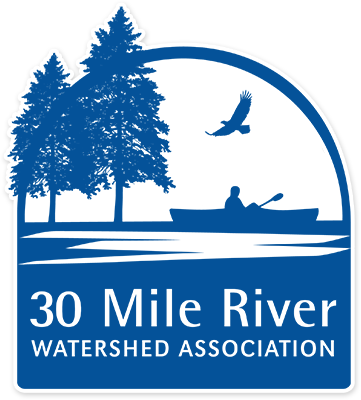If you live on or near the lakefront, you may (or may not!) know about the importance of BUFFERS. The shoreline buffer is the “last line of defense” in protecting your lake or pond from polluted stormwater runoff. Buffers with many tiers of vegetation (ground covers, shrubs, trees) provide the most protection. Multiple tiers of vegetation intercept more rain, and the deep roots of native plants help absorb rainwater and extract phosphorus and other pollutants.
Maine Lakes’ LakeSmart program recommends that all landowners maintain a shoreline buffer that:
- slows and absorbs rain and stormwater from uphill areas,
- has multiple layers of native vegetation, and
- is at least 10’ deep across your entire developed shorefront.
A shoreline buffer not only protects water quality in your lake or pond, but it also provides important wildlife habitat that is vital to aquatic and terrestrial wildlife that live in, near, or rely on the lake ecosystem for survival.
Remember that trees do not live forever. Are you nurturing the next generation of big trees on your shoreline? If not, make sure you are allowing the saplings in the understory of your shoreline buffer to grow and mature; one day these will take the place of the large mature trees currently growing on your lakefront.
For more information on shoreline buffers, visit the Maine Lakes’ buffer webpage by following this link.
30 Mile’s Youth Conservation Corps (YCC) program is your expert source for recommendations of native buffer plants for your shoreline, and also provides labor to shorefront landowners in our watershed who want to install native plants to establish or improve their shoreline buffer. For more information about 30 Mile’s YCC program, or to request a free site visit, visit our YCC page.


